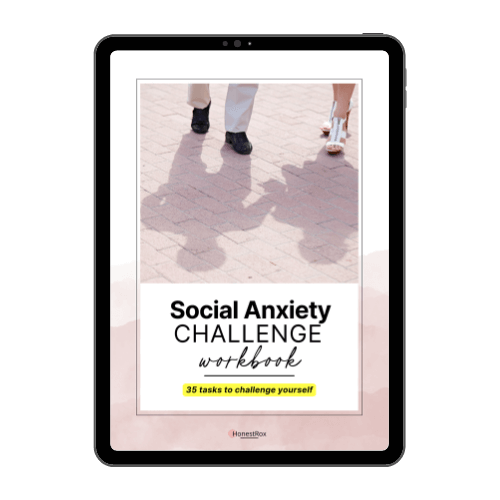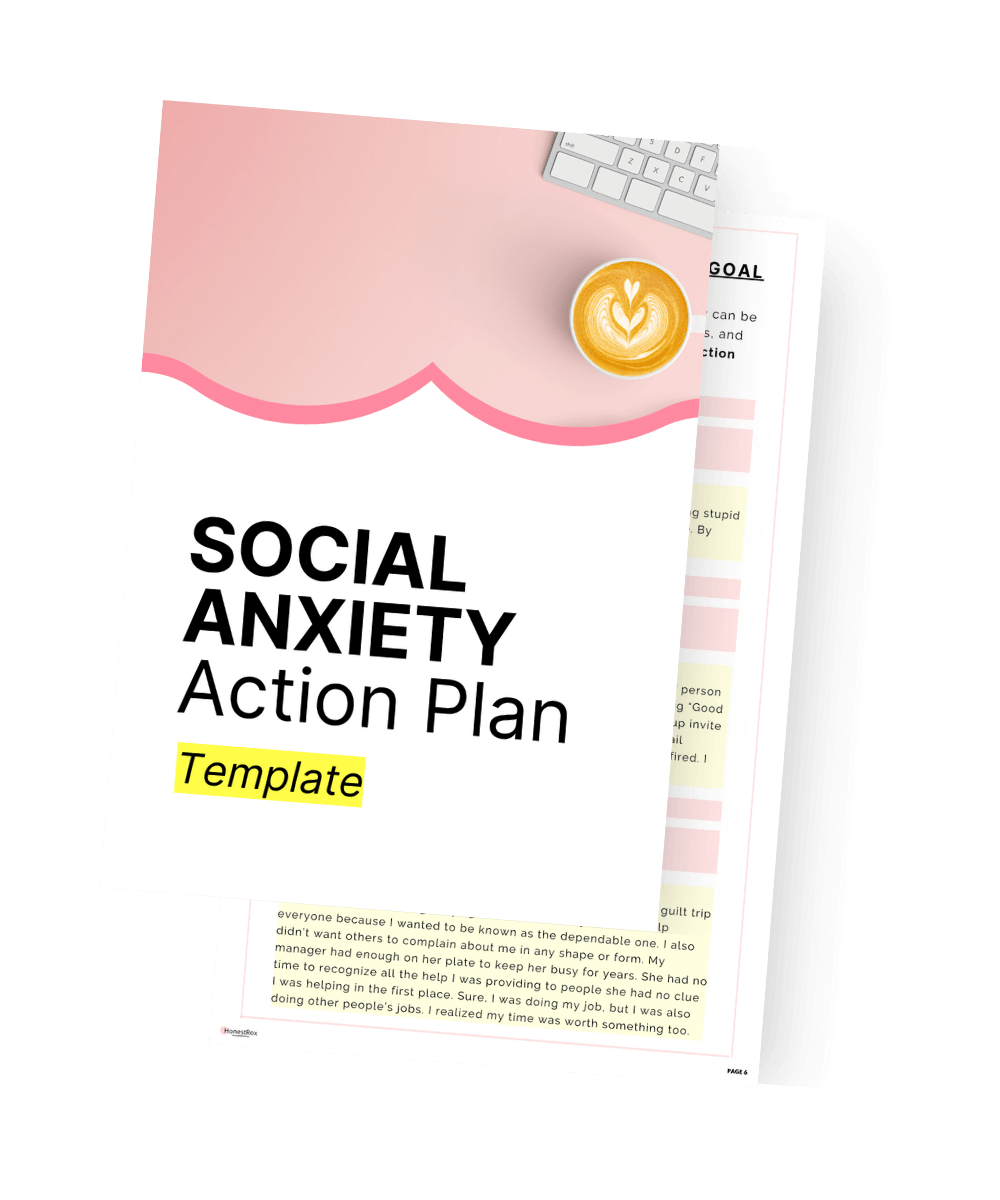
Social Anxiety
How to use Exposure Therapy for Social Anxiety
Let’s do a walkthrough on how to start using exposure therapy
I unwittingly exercised Exposure Therapy for social anxiety for a decade before I learned the technical term.
And now it’s my favourite thing to do for fun.
*Disclaimer*
Any techniques and types of exposure I’m outlining today have different effects on different people. While you might benefit from graded exposure, someone else might love flooding and die on that hill. Only a trained therapist can evaluate your personalized needs and the best approach!
That being said, I’m not a licensed therapist; I’m just here to tell you what has worked for me and my experience with exposure therapy.
To be honest, when I learned of the term “exposure therapy,” it sounded extremely intimidating and not something I wanted to be a part of.
And it feels like much of the scientific terminology coming out of psychology is not human-friendly or accessible to most of us.
So, if you’ve also been intimidated and on the fence about exposure therapy and you’re not exactly sure what it is, I’ll do my best to walk you through and give you a proper step-by-step walkthrough on how to start thinking about implementing it in your life.
It might feel like you’re going in all naked (I should know; I’ve been going to naked spas here in Europe, and dang, there’s nothing more exposing than that!), but it’s all evidenced-based so you can be reassured that it will help you manage your social anxiety if done correctly.
So let’s go back to basics with a one-sentence umbrella definition of Exposure Therapy:
It’s a psychological treatment to help people confront their fears.
That’s the core of it. You might not be surprised to hear that it originated from the work of behaviourists Ivan Pavlov and John Watson in the early 1900s. If you’ve heard of Pavlov’s dog, that’s the root of exposure therapy.
FYI: Exposure therapy is the most effective psychological technique for treating anxiety disorders, and it is an essential part of evidence-based cognitive-behavioural therapy (CBT).
The reason why it’s part of CBT is that exposure needs to be combined with unlearning negative thought patterns and associations and replacing them with new, non-threatening ones.
You can use exposure therapy for social anxiety to help you with:
- The fear of eating in public
- The fear of using public restrooms
- The fear of talking on the phone
- The fear of social situations, such as going to birthday parties
- The fear of being in the center of attention
- The fear of public speaking
- The fear of conflict
There are five different techniques under Exposure Therapy:
- Graded exposure
- Systematic desensitization
- Prolonged exposure
- Exposure and Response Prevention
- And flooding
I’ll only touch on three of these for time constraint purposes and to focus on the techniques most frequently used for social anxiety specifically.
Let’s talk about Flooding.
Let’s say you have a fear of sharks. Sharks terrorize you. You probably live in Florida (I know the feeling). So, any action you take to face a shark or be near one is practicing exposure therapy.
But if you were to use the Flooding technique, you’d do a cannonball into a pool full of sharks and stay in as long as you can.
This is called Flooding (also known as implosion therapy). My goodness, the word implosion made me think of the imploded submersible. They need to change the terminology because I wouldn’t want to tell people I’m doing Implosion Therapy!
Flooding is when you face your fear at a maximum level of intensity for an extended amount of time.
The reasoning is to be in a situation where your body’s fight-or-flight response exhausts itself so your brain can recognize that nothing bad has happened to you.
You get so tired of being scared that the sharks desensitize you. We can see how this can potentially work with phobias or PTSD but not necessarily with social anxiety.
Anyone with Social Anxiety will tell you that it won’t do much good no matter how much they simply expose themselves to an office environment or with a group of friends without any thought behind it.
Because here’s the catch with Flooding – it relies on the idea that no negative outcome shall arise from it.
But we all know that social anxiety has to do with people (whether talking to them, hanging around them, presenting to them), which means you will get side-stares, comments, and so on that might set you back.
It’s for this reason that it’s not my preferred technique.

What does it take to show up confidently?
It’s time to stop sabotaging yourself and start believing you’re worth knowing. Get the tools you need to build social confidence, manage social anxiety, and rock conversations.
The second exposure therapy technique is Graded Exposure.
This involves gradually exposing yourself to the source of your fear by going up the ladder one step at a time. So, you write down a list of activities you can do to reach a potential goal.
This is called the fear hierarchy ladder (I call this social anxiety ladder), where you start with the least fearful activity and work your way up (or, in this case, down into the pool).
It might be that putting your toe into a pool of sharks is step #9 for you, with the first one being visiting an aquarium.
Ok, but we’re not here to talk about sharks, are we? Let’s make this relevant to social anxiety and give you a proper example of a fear hierarchy ladder.
Let’s say your goal is to be able to go to a bar with your friends and not be the first one to leave.
- The first step would be to go to that bar on a weekday afternoon (not necessarily by yourself), buy a drink, and stay for 15 minutes.
- The second step would be to go again on a weekday afternoon, buy a drink, and stay 30 minutes.
- The third step would be to go to the bar on a weekday night and stay for an hour.
- The fourth step would be to go to the bar on a weekend night and stay for 30 minutes.
- The fifth step would be to go to the bar on a weekday night and stay for a few hours.
- The last step would be to go to the bar on a weekend night and stay the entire time.
Now, this isn’t done in a vacuum. As I mentioned earlier, simply showing up for the sake of it might not get you anywhere because the activities on the ladder don’t consider what happens while you’re out—the conversations, the thoughts, the feelings, the conflicts, and so on.
Sure, your body might be able to get itself to stay the whole night at the bar, but your mind might be traumatized, so then what good is it? Here’s where the bigger picture comes in.
When you practice Exposure Therapy within the context of CBT, this is what it would look like:
- You’ll first assess your social anxiety so you and the therapist are on the same page regarding your anxiety. You’ll pinpoint your fears in social situations and discuss past traumas or experiences that could have contributed to your anxiety.
- Next, you’ll create the fear hierarchy ladder I mentioned earlier. So, you’ll sit down and number 10 things from the least scary to do to the most scary for you. They have to be related to the main goal you’ve set for yourself.
- Then, you start with the first item. This is something you can practice daily, wherever you go. It doesn’t involve much effort other than just walking out of your house. I understand if you work remotely, it can be a challenge.
- You might be tempted to run through the list, but that would defeat the purpose of the exercise. The idea is that it should come as second nature to you, without any added thoughts to leaving the house to go to the bar.
The key here is to not move up the ladder until you feel comfortable with the first step.
- Then, you reflect on your feelings and thoughts. What was your anxiety level before and after? “What did you fear would happen?” “What happened?”, “Why was that surprising?” and “What did you learn?” You do this until you no longer feel anxious about making it to the bar.
- Then, you move on to the next item. The key here is to practice regularly. The more you’re out of the house, exposing yourself to the items on your list, the faster you’ll feel desensitized.
- Now, there will be days when things won’t go well. Maybe you’ll overthink more, be on your period, and have doubts floating around, making it harder to move through the exposure. It’s ok! Take a step back, maybe go to the previous step where you felt more comfortable, and keep doing that until you’re ready to move up the ladder again. Don’t judge yourself or feel like you’re failing.
- While you’re going through the list, make sure you celebrate your achievements! Use positive reinforcement to boost your confidence. Get that Starbucks Pumpkin Spice Latte. Enjoy it while you’re making eye contact and smiling with the barista.
- There’s no timeframe for how long it should take you to move through each item. It depends on each person’s work, lifestyle, state of mind, etc. But at some point, hopefully, you’ll reach the last point and cross it off.
- Finally, I want to mention that you’re not done yet! The work is never done. Now you’re in maintenance mode. You must keep reinforcing your skills, or you’ll revert to your old state of insecurity. Trust me, I returned to square one multiple times with social anxiety because I didn’t make it a point to practice challenging it.
See how this is more holistic than simply checking activities off the fear hierarchy? You have a much higher chance of recovering from social anxiety if you do all these steps.
The third exposure therapy technique is Systematic Desensitization.
This is technically a subtype of Graded Exposure because it combines Graded or Gradual Exposure with relaxation techniques.
Using counter-conditioning, the idea is to break the conditioned response of fear and replace it with a relaxation response. What this means is that you’ll train yourself to have a new response to the fear (a more relaxed one).
So, as you go through the fear hierarchy ladder, you confront your fears with breathing and muscle relaxation techniques.
There are 3 steps to it.
- The first one is to go through Relaxation Training. You learn deep muscle relaxation techniques and breathing exercises.
- The second step is to create the fear hierarchy ladder, ranking the least anxious activity to the most anxious one.
- The third step is to expose yourself to each activity while activating the relaxation techniques.
You can see how this also can be beneficial if incorporated into a bigger picture, as we’ve seen with Graded Exposure.
Exposure therapy must be combined with challenging your thought patterns as they arise.
Otherwise, you’re simply going through the motions. But you should research which Exposure Therapy techniques might be more relevant to you and your challenges.
When I started my journey with social anxiety, I created an action plan with specific action items related to one task. I built my social anxiety ladder for each goal and kept to it.
It was the biggest game changer for me.
So when I sat down to design and create my Challenge Your Social Anxiety 35-task Workbook, I wanted each task to have multiple exercises attached to it, so now each task has three difficulty levels, and they are related to the task itself.
If you want to try it out first, I have a 5-day social anxiety challenge so you can get a taste of exposure therapy.
In this blog post, I walk you through 3 exposure therapy techniques for social anxiety, with an entire walkthrough of my preferred and recommended one.

I'm Roxana Claudia

I went from being scared to ask a question out loud to hosting summits online. I love coffee, French crepes, and working from home.
My mission? Help others dismantle their toxic shame so they can make friends, have conversations, and be comfortable around people!
Did you find value in my content? Buy me a coffee!
Recent blog posts
Latest Episode

About the blogger
I'm Roxana Claudia
👋 Hi, I’m Rox. Let’s work on your self-worth. More than anything, I want you to believe you’re worth knowing instead of banking on external elements making that call for you.
Like what you see here?
Check out the blog!
Must Reads
Grab these freebies
Free Challenge
5 tasks. 3 difficulty levels. Test your social anxiety through exposure therapy.
Grab these freebies
Free Template
Get the template that I personally used and create your own steps for your journey.
A podcast meant to help you be comfortably you, no matter the situation. My goal is to give you the confidence to go out into the world, share your worth, build meaningful relationships, and see yourself as highly capable. It all starts with being your awkward self comfortably.
You’re worth knowing
The You’re Worth Knowing newsletter drops weekly to inspire, motivate, and educate you on embracing your true worth, rejecting societal pressures, and living authentically. Expect a mix of personal stories, real talk, and a few laughs along the way—because living boldly can be fun!

Hi, I'm Rox!
I spent years struggling with toxic shame, which often showed up as crippling social anxiety. It held me back in so many areas of my life, making me feel unworthy and paralyzed by fear. But through years of self-discovery and healing, I finally found the tools to break free from it.













